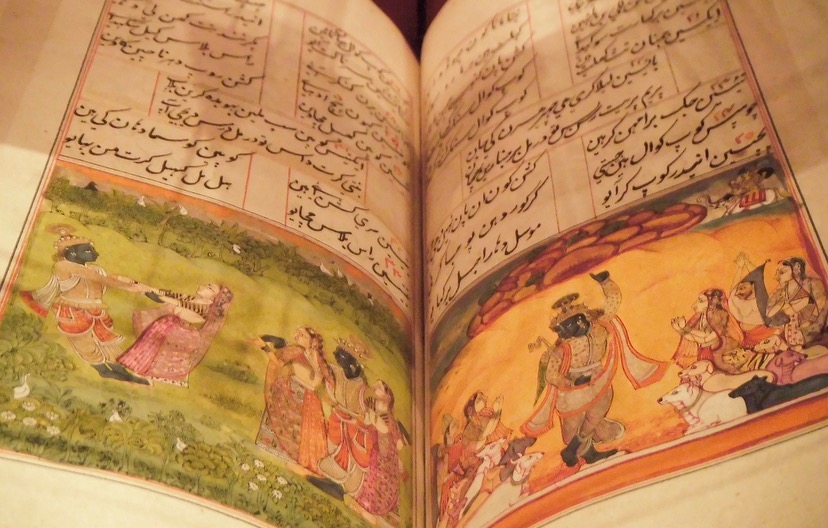People often talk about consciousness as a mystery. But there isn’t anything mysterious about consciousness itself; nothing is better known to us than our own experiences.
— Philosopher Philip Goff, writing in his essay, ‘Bertrand Russell and the Problem of Consciousness’
I mentioned, yesterday, that a group of scientists and philosophers have been pushing a radical idea lately.
“Pan-psychism”… “Pan” meaning, “Everywhere”, and “Psych” meaning, “Consciousness.” Panpsychism, then, is the belief that consciousness is everywhere.
Given the failure of modern science to define and explain the one thing that is common to every human being — consciousness — the panpsychists have proposed a general concept that consciousness is just as much an “essential building block” of reality as are ‘space’, ‘time’, ‘matter’ and ‘energy’. The theory postulates that ‘consciousness’ is present in everything, from the largest galaxies to the smallest subatomic particles.
That everything — everything — has some level of ‘awareness’ of its surroundings… and perhaps even some level of ‘intentionality’.
This is not a new idea. Cultures all around the world, down through history, have apparently held similar beliefs — that everything in nature is blessed with consciousness, although some have taught that consciousness is found only in living beings (people, animals, plants).
Ancient Hindu scriptures, dating back to perhaps 1500 BC, are interpreted differently by different teachers, (and always have been), but one popular teaching holds that the universe, as we know it and experience it, is a single, unified consciousness… and that all conscious beings are, in essence, sharing one and the same consciousness. Such a world view can easily accommodate the idea that a nocturnal dream might allow access to special areas of the universal consciousness inaccessible to us when we’re awake. That special access might allow us to look into the future, or develop unique insights into the situations we’re facing during the daytime.
This Hindu understanding of the world as a unified consciousness, poses a strong challenge to the ‘materialist’ view that science has been promoting, ever more aggressively, for the past 400 years, especially in Europe and North America. In general, the ‘materialist’ view has long maintained that consciousness, far from being universal, exists only in human beings — if it even exists at all? (See Part One of this essay, for a brief overview of the idea, as promoted by philosopher and scientist Daniel Dennett, that ‘consciousness’ is merely an illusion created by the mechanical firing of synapses in the brain.)
The materialist often views the world as lifeless matter that, in certain accidental combinations caused by an non-conscious process called ‘evolution’, gives the appearance of being something more than lifeless matter. To the materialist, a nocturnal dream — something that presents no physical evidence of its occurrence other than some electrical activity in a recessed corner of the brain… and some “random eye movement’… and perhaps some twitching in the hands and feet — can have little significance.
Something that has little physical significance gets ignored, if you believe the world is exclusively physical.
This materialist view would appear, on its face, to deny not only Hindu beliefs in a universal consciousness, but also Judeo-Christian beliefs in humankind as “created in God’s image” and as having inherited from the Creator a range of intellectual and moral characteristics.
The ‘panpsychists’ are now challenging the materialist world view. How far they will get, no one knows. But I want to touch for a moment on another idea we’ve briefly considered in this essay.
Confirmation bias.
I’ll repeat a quote I shared earlier, attributed to billionaire Warren Buffett: “What the human being is best at doing is interpreting all new information so that their prior conclusions remain intact.”
If Warren Buffett is correct, confirmation bias — the tendency of people to favor information that confirms their existing beliefs, and to undervalue evidence that could disprove those beliefs — is not only a common human trait, but it’s what we do best.
I enjoy hearing alternative view on current events from our Daily Post readers and contributors. Different views on the Biden-Trump election, for example. Different views on the COVID pandemic. Different view on local politics. Sometimes, I end up in lengthy email exchanges with these friends, and I am often amazed at how often highly intelligent people will look at only one side of an issue, and totally discount and ignore the evidence on the other side of the coin. (I have no doubt that I’m suffering from the same malady, at least on occasion, and rarely notice it.)
And it seems that, the less certain a person is about the certain question, the more desperately they cling to their biased opinions.
Right now, many scientists are clinging to a materialist view of the universe, and feel justified in their biases because science has made great progress in understanding certain physical processes.
But what happens when a process is not physical? What then?


